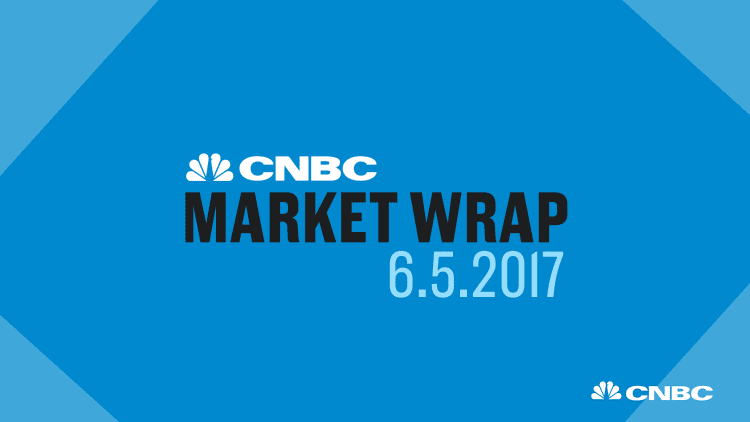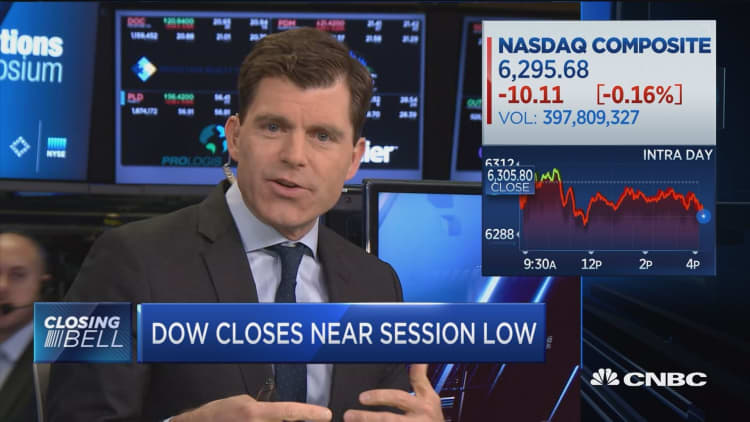
This market's signature move is the shrug: Stocks seem to shrug off any and all adverse-seeming news and march to new highs, while investors shrug in confusion over why nothing seems to disturb the rally.
Muted U.S. economic growth, terrorist attacks, waning prospects for bold
This might not be the paradox that many insist it is. For most of the past several years, a low-rate, slow-growth environment has been converted into decent profit growth by companies and into rising stock prices by the market - led by big, well-run growth businesses. This year has been more of the same – an upwardly tilted but selective stock market, with Big Tech, travel, housing and global industrial names surging while retail, banking and energy stocks struggle.
Others will hasten to add that cheap, liquid capital continues to power the capital markets, as central banks of the major developed countries continue to enlarge their balance sheets at a 16 percent annual rate, for now.
Yet the indexes and their valuations have stretched enough to the upside while measures of risk-aversion have ebbed to a point where it's worth asking what might, at last, be out there to bother this resilient, imperturbable bull market?
Credit Could Crack
Stocks don't get to stay at a new, higher level without the explicit, ongoing permission of the credit markets. The enormous market for corporate debt typically leads equities, and right now credit is giving the nod for stock investors to play on.
The yield on the leading junk-bond indexes is down around 5.5 percent, not far above the all-time lows of three years ago. Granted, stock valuations are a good bit higher now, but until and unless corporate debt markets wobble it's hard to say much dramatic or sustained downside in stocks.
Bank of America Merrill Lynch US high yield effective yield, 5-year
Which brings up the question of just how sturdy those credit markets are. Last week, a Wall Street Journal canvas of bond-fund managers found that those who know the junk markets best seem to like it least. Seasoned high-yield investors see little value at current levels, and it seems yield-chasing money is the marginal buyer.
Most of the segments of the economy that are showing either structural decline or late-cycle wear and tear have
This is all relevant
But this is why investors should watch for any signs that the
Might the party get too wild?
Various measures of financial conditions show the markets to be fairly lubricious, inviting plenty of speculative behavior. Any continued levitation of stock prices, especially if it's still led by the tech giants now up more than 25 percent on the year, will stoke more concerns about overheated capital markets decoupling from the economy.
Trader sentiment and options-trading patterns have reached short-term extremes typical of a market susceptible to stalling or perhaps even slipping back a few percent. Already, a chart showing the pronounced outperformance of the Nasdaq 100 index to the small-cap Russell 2000 is in heavy rotation as a putative dark omen, though it was far more monstrously lopsided in the late-'90s. So if this is to become a true and treacherous bubble there's room to go.
Nasdaq 100 relative strength vs. Russell 2000
Source: FactSet
Bank of America Merrill Lynch strategist Michael Hartnett has been on the money this year calling for what he's dubbed the "Icarus trade" to lift stocks deep into record territory as investors gain confidence in global growth and the benign efficacy of central banks.
Tracking this trade, Hartnett calculates that if the were to rise another 15 percent or so to 2822, it would make this the greatest-ever bull market. At the 2620 mark on the index, up 7.4 percent, the value of the domestic stock market to U.S. GDP would match its year-2000 peak. He figures this Icarus-like "overshoot" will continue "until [a] Wall Street bubble (not Main Street recovery) forces [the] Fed to tighten aggressively."
This doesn't seem a present danger, beyond the fact that the Fed seems on course for a June rate hike even with some mushy economic data lately. But a resolute Fed that starts explicitly focusing on financial excesses would be a new and jarring challenge to stocks at this level.
What if bulls needed to count on policy?
A big reason the lack of progress on the Trump economic agenda hasn't held back the stock market is, investors had plenty of support from the fundamentals.
Forecasts for the second quarter are being trimmed at around the "usual" pace even as equity indexes climb, which could develop into a more u
That's a lot of "ifs," but investors will certainly be less forgiving of stocks at current stout valuations if profits are no longer a cinch to climb by double-digits in 2017 – without help from tax or infrastructure policy that might not arrive in time.
Watch: Economy in slow and steady mode



